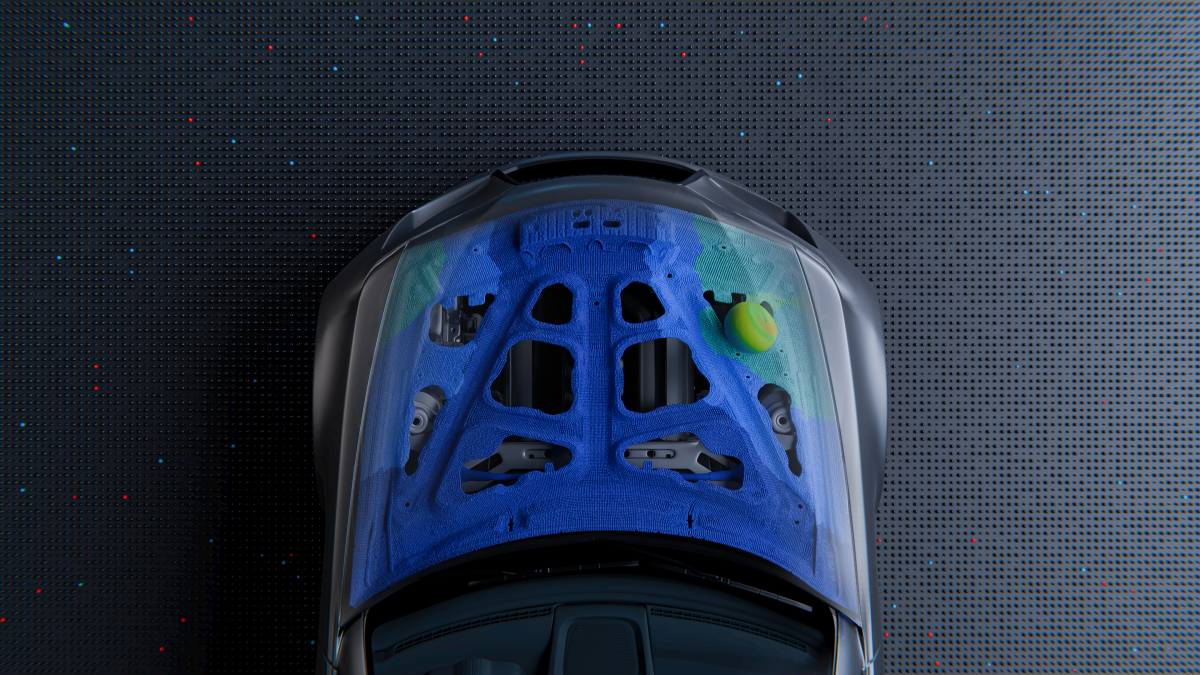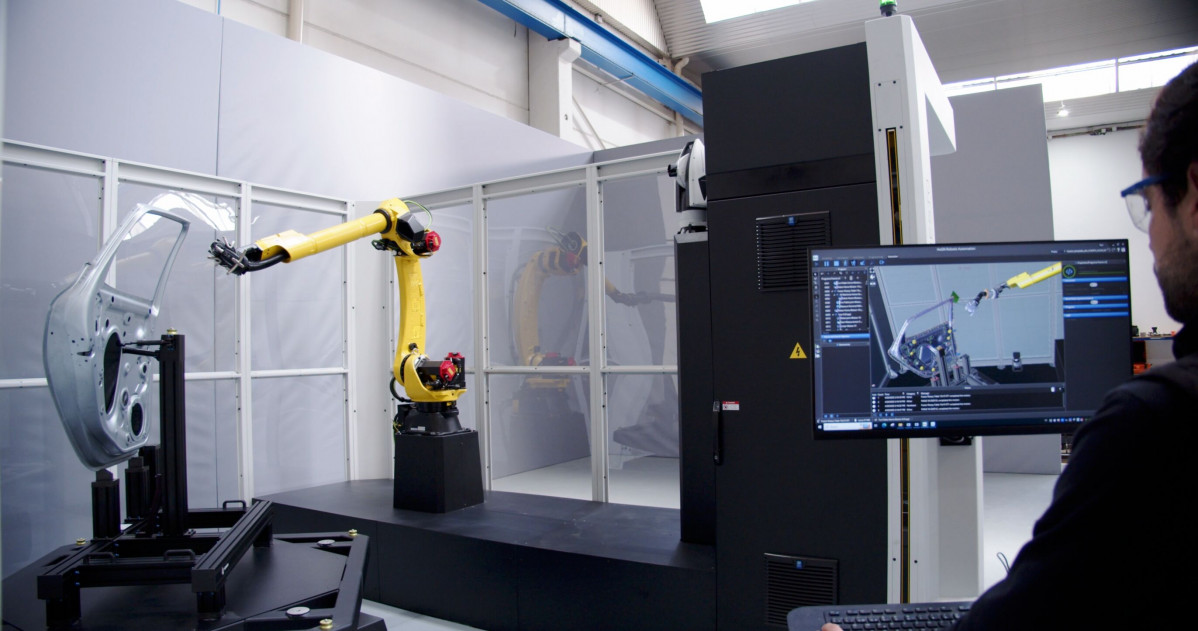AI enters the world of digital simulation

The possibilities of simulation continue to increase to recreate reality and possible cases in the different processes of the automotive industry. Article published in AutoRevista 2.397.

According to Óscar Calvo, Senior Account Manager Automotive at Altair, a firm recently acquired by Siemens, simulation software in production plants that integrate electric, hybrid and internal combustion models faces several key challenges: “First, the integration of disparate technologies requires the software to efficiently model the interactions between the different systems, each with unique characteristics and requirements. In addition, the complexity of the processes increases when combining different types of engines and energy sources. The constant adaptation of the software to technological innovations is another important challenge, given that vehicle technologies evolve rapidly. It must also be able to optimise production, ensuring energy efficiency and compliance with environmental regulations. Finally, ensuring the accuracy of simulations and their validation with real data is crucial to avoid inefficiencies in the plant”.
Along these lines, he explains that the introduction of artificial intelligence (AI) tools in simulation processes offers very promising prospects for increasing realism and predictability: “AI can improve the accuracy of models by analysing large volumes of data and learning from complex patterns in real time, allowing for more detailed and adaptive simulations. In addition, the use of machine learning algorithms can optimise decision-making, anticipate failures and predict behaviour under changing conditions. This makes it possible to simulate scenarios that were previously difficult to model. Likewise, AI facilitates the customisation of simulations for different operating conditions, improving process efficiency and resource management in plants. As these technologies advance, their integration will transform simulation systems, making them more dynamic and precise”.

In this sense, he believes that the use of simulation tools and digital twins can have a significant impact on reducing the time to launch products to the market: “By allowing the virtualization of processes and products, these technologies facilitate the early detection of faults and optimize the design before physical production, reducing the need for expensive physical testing and validation times. In addition, they allow the simulation of different production scenarios, which helps to identify the most efficient process and minimize adjustments during manufacturing. With a digital twin, it is possible to make continuous improvements in design and production in parallel, accelerating the development cycle and reducing delays. Together, these tools can speed up product launches, improve quality and reduce costs”, he points out.
Finally, he points out that work is being done to improve the person-simulation tool interaction through more intuitive and easy-to-use interfaces, both for professionals and for operators in the plant: “The use of low-code/no-code platforms, where the focus is on product knowledge, facilitates the understanding of processes and allows for more informed decisions to be made. “In addition, the integration of virtual assistants and artificial intelligence systems helps guide users, offering recommendations and alerts in real time. Collaborative platforms are being developed that allow professionals to interact with simulation models in a more dynamic and adaptive way, improving efficiency and reducing the learning curve”, he concludes.
Diversity of modelling requirements
Juan Nasarre Claver, Country Manager MathWorks Iberia, explains that his company's main contribution to the automotive industry is through product development. In this context, the first challenge is the diversity of modelling requirements: “Different technologies often require different simulation approaches, such as specific solvers and integration steps; this increases the complexity of model development and integration. In addition, existing models may have been created with different tools, so additional effort is usually required to ensure that all parts of the simulation, including the control software, which is an integral part of the simulation, can be seamlessly integrated into the simulation platform. Another challenge is ensuring scalability and flexibility; simulation software must effectively manage various project scales, from component-level simulations to the entire vehicle, while remaining adaptable to evolving technologies”.

On the other hand, Nasarre Claver comments that, although the history of the application of AI to simulation is short, the result is remarkable: “AI can improve simulation by creating models of a system using data when it is difficult to do so based on physics. Of course, to achieve this, a large amount of real-world data is needed, which allows simulations to reflect the real world and the operating conditions of the system. A variant of this approach is Reduced Order Modeling (ROM), where a part of the simulation model originally built on basic principles is replaced by an AI model for faster execution with sufficient realism. For example, Subaru was able to improve the simulation speed of its transmission model by an order of magnitude by creating a ROM using MATLAB”.
Regarding digital twins and simulation, the MathWorks Iberia Country Manager believes that they allow rapid prototyping and virtual testing, which can identify design defects and optimize performance in the early phases of the development cycle, reducing the need for physical prototypes and iterative testing. “In addition, digital twins provide real-time insights and predictive analytics, enabling continuous monitoring, improvement throughout the product lifecycle, and predictive maintenance. Finally, digital twins and simulation models facilitate collaboration between teams, helping to accelerate decision-making, innovation, and problem-solving, thereby reducing time to market”, he concludes.
Changing the world of simulation
For his part, Luca Hornung (Stampack) points out that the main challenge is the lack of qualified personnel in the sector, especially since many production experts are about to retire. However, in his opinion, “there is no doubt that the key to success for a simulation company is to offer software for non-simulation experts, which will democratize technical knowledge even to inexperienced users”.

He also says that the first way in which AI changes the world of simulation is by overcoming the critical problem that simulation only has a specific set of parameters, while in reality, parameters such as material quality vary within production. “AI allows us to cover a series of parameters that vary in a production process, and allows us to make simulation predictions of the bandwidth needed to cover reality on the shop floor. The second AI revolution is the ability to train AI models with simulation to make predictions of the outcome of a simulation in seconds. This approach is less precise than a simulation, but it allows for faster iterations at an early stage, which is a huge advantage”, he says.
On the other hand, and when asked to what extent he believes that the use of simulation tools and the digital pairing of processes and products can influence a greater reduction in time to market, he insists that there is much room for improvement in the application of simulation tools. “Currently, only around 30% of parts and production processes are simulated, which inevitably leads to long and costly trial and error iterations in the set-up. Although the number of simulated parts is increasing, there is still much scope for improving this process, especially for small and medium-sized companies”, he adds.
Finally, regarding how his company is working to improve the human-simulation tool interaction for both the simulation professional and the user in the workshop, he indicates that his software is designed by die designers for die designers. “We do not differentiate between simulation users and professionals, as we believe that everyone can be a professional and should perform simulation themselves. Our main goal is to provide simulation software that does not require any knowledge of materials science or finite element analysis”, he concludes.
Jordi Planell, Hexagon's Sales Manager in Iberia, argues that ‘process optimisation in a plant that handles multiple types of models is a challenge due to the different production needs of each type of vehicle. The goal is not only to develop a product, but also to optimise manufacturing processes based on real information, making decisions in a virtual process. Predictive processes are also very important based on real information and through a virtual process. Hexagon offers solutions for capturing information in the automotive sector, such as the PRESTO platform, solutions for the management of shared information, such as the NEXUS platform and finally also simulation software solutions such as SIMUFACT’.
Planell explains that "once we have captured the information and developed the AI simulation processes through autonomous processes, based on the tools we already have, information management and decision making is becoming automatic. At Hexagon, we have ODYSSEE CAE, a powerful innovation platform focused on CAE processes that allows engineers to apply machine learning and artificial intelligence to optimise design and workflows”.
Hexagon's executive believes that "by improving efficiency in design, testing, production and supply chain management, these technologies enable companies to respond more quickly to market demands and remain competitive. At Hexagon, we have all the technologies and solutions for the development of the complete Digital Twin".
Finally, Planell points out that ‘to get the full benefits of simulation solutions, they need to be extended to many more people who are working in the manufacturing process, not just development engineers. More intuitive and user-friendly user interfaces (UIs) are being developed that do not require deep technical knowledge. At Hexagon, we are working on the Virtual Clamping process to achieve maximum potential in this area”.


A poco más de tres meses de una edición histórica como será el 50 aniversario de Equip Auto, Aurélie Jouve, directora del Salón, nos avanza todos los detalles de la cita del 14 al 18 de octubre en Paris Expo Port de Versailles.

Carta del director editorial Nº 2.403 de AutoRevista

El sector español de proveedores de automoción finalizó 2024 con unas exportaciones valoradas en 25.065 millones de euros, lo que supone una leve caída del 0,5% respecto al récord alcanzado en 2023.
![X1310 ETECH HR18 DB45 OverviewG ORANGE[31] X1310 ETECH HR18 DB45 OverviewG ORANGE[31]](/images/showid2/7434115?w=981&zc=4&zc=1&w=280&h=209)
HORSE Technologies ha desarrollado su nueva unidad motriz híbrida integrada, la HR18 HEV. Se trata de la primera unidad motriz completa diseñada, desarrollada y producida bajo la marca HORSE Powertrain, y se ha desarrollado en los centros de I+D de Rumanía y España.

La fabricación de vehículos eléctricos de batería (BEV) en el Reino Unido superará con creces las previsiones realizadas para la fabricación mundial y europea, y los fabricantes de automóviles británicos alcanzarán una producción casi total de vehículos eléctricos de batería en 2035, según un informe de Advanced Propulsion Centre UK (APC).
